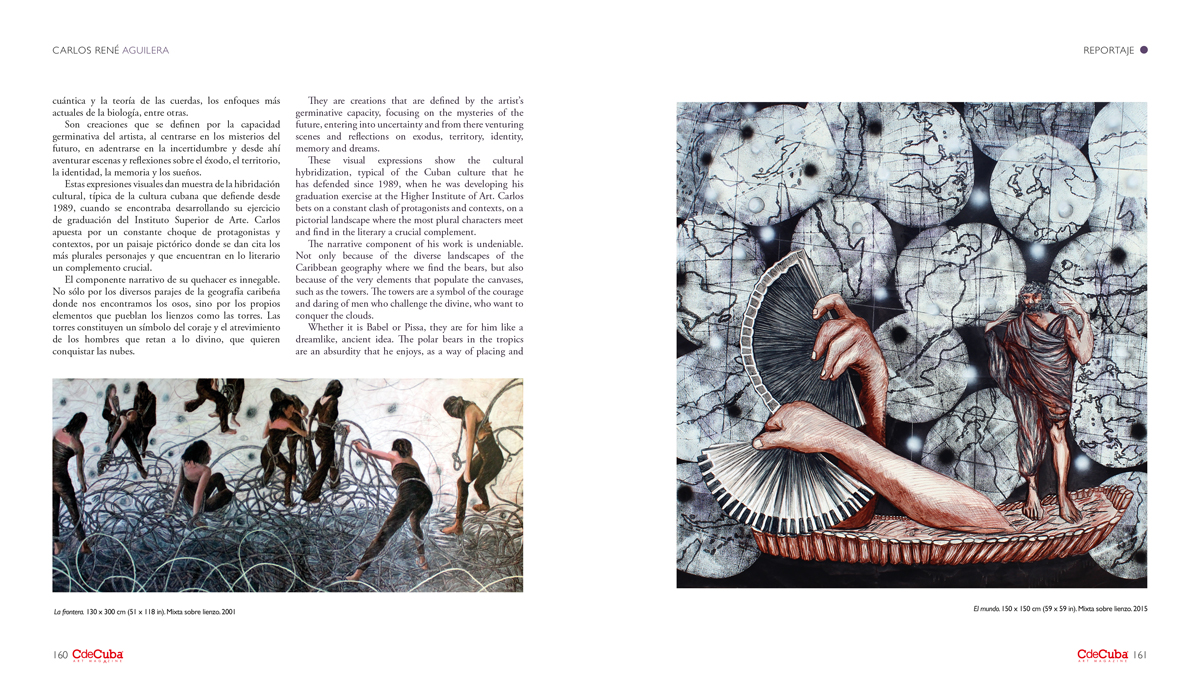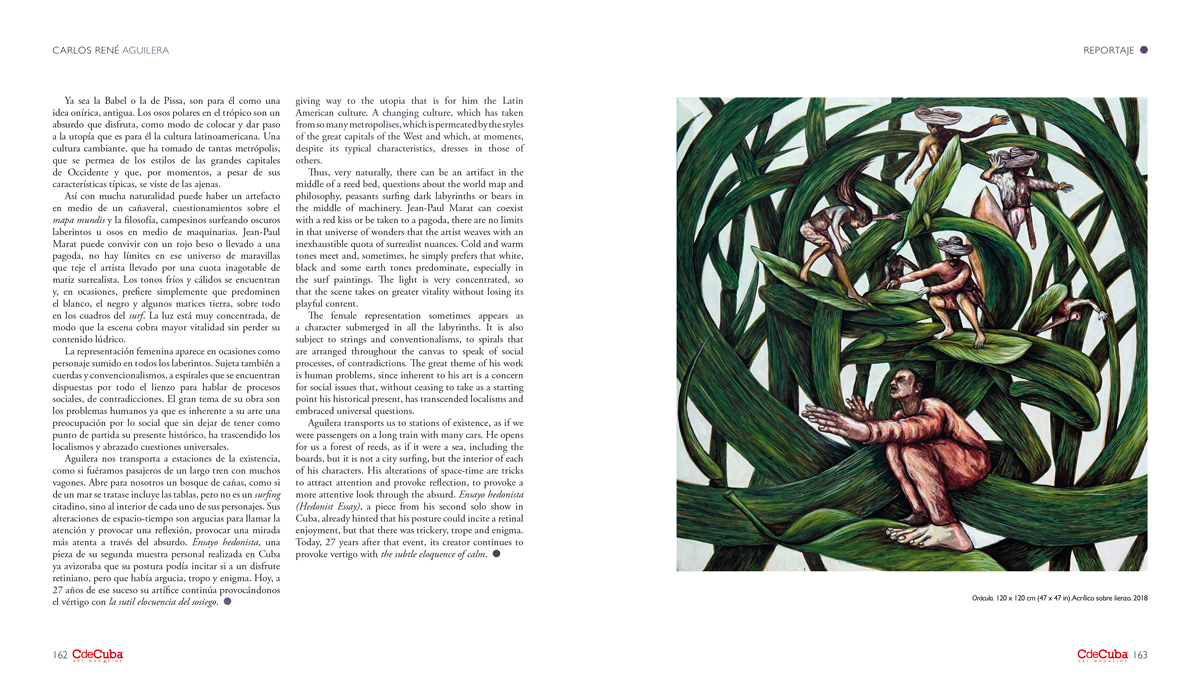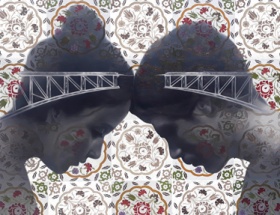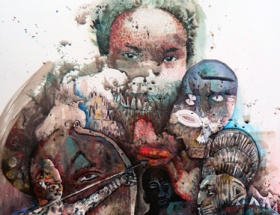The Subtle Eloquence of Calm
By Estela Ferrer
It has been a long time since the roar of the bears and the graceful shapes of his characters seduced us, leading us to a pictorial universe that thinks about Latin American identity from a different perspective, analyzes it, brackets it, makes it more complex. All these thoughts assault us when we are in front of the works of artist Carlos Rene Aguilera Tamayo (Santiago de Cuba, 1965). An artist whose family encouraged his approach to art from an early age and who was part of the renovation that took place in the 1980s. His is a production that has focused on human utopias, with special attention to the theme of exodus, approached from his own sieve.
An emigration, seen from the spatial and temporal links, from a game that breaks the historical continuity, in such a way that unreal scenarios are built. Following this theme, the polar bear has become the center of his poetics as an element that summarizes all entropies. The polar bear is the greatest statement of his artistic stance, it represents personal universes, his detachment from group aesthetics, the union between tradition and contemporaneity.
Traditionally, migration has been approached in the sea outside the island, but Aguilera places it in a scenario of risk and struggle on the interior side, an idea that arose from comparing the extensions of sugar cane planted in Cuba with the real sea. The inland sea provides a stage, the country man an actor and the surfing an interesting and subtle gesture.
Peasants and classical representations coexist with the bear, annulling the time barrier, but rather dilating it without fear. He presents them according to his perception of the universe in which he moves and exists, which has a clear influence of the theories of complexity, quantum physics and string theory, the most current approaches to biology, among others.
They are creations that are defined by the artist’s germinative capacity, focusing on the mysteries of the future, entering into uncertainty and from there venturing scenes and reflections on exodus, territory, identity, memory and dreams.
These visual expressions show the cultural hybridization, typical of the Cuban culture that he has defended since 1989, when he was developing his graduation exercise at the Higher Institute of Art. Carlos bets on a constant clash of protagonists and contexts, on a pictorial landscape where the most plural characters meet and find in the literary a crucial complement.
The narrative component of his work is undeniable. Not only because of the diverse landscapes of the Caribbean geography where we find the bears, but also because of the very elements that populate the canvases, such as the towers. The towers are a symbol of the courage and daring of men who challenge the divine, who want to conquer the clouds.
Whether it is Babel or Pissa, they are for him like a dreamlike, ancient idea. The polar bears in the tropics are an absurdity that he enjoys, as a way of placing and giving way to the utopia that is for him the Latin American culture. A changing culture, which has taken from so many metropolises, which is permeated by the styles of the great capitals of the West and which, at moments, despite its typical characteristics, dresses in those of others.
Thus, very naturally, there can be an artifact in the middle of a reed bed, questions about the world map and philosophy, peasants surfing dark labyrinths or bears in the middle of machinery. Jean-Paul Marat can coexist with a red kiss or be taken to a pagoda, there are no limits in that universe of wonders that the artist weaves with an inexhaustible quota of surrealist nuances. Cold and warm tones meet and, sometimes, he simply prefers that white, black and some earth tones predominate, especially in the surf paintings. The light is very concentrated, so that the scene takes on greater vitality without losing its playful content.
The female representation sometimes appears as a character submerged in all the labyrinths. It is also subject to strings and conventionalisms, to spirals that are arranged throughout the canvas to speak of social processes, of contradictions. The great theme of his work is human problems, since inherent to his art is a concern for social issues that, without ceasing to take as a starting point his historical present, has transcended localisms and embraced universal questions.
Aguilera transports us to stations of existence, as if we were passengers on a long train with many cars. He opens for us a forest of reeds, as if it were a sea, including the boards, but it is not a city surfing, but the interior of each of his characters. His alterations of space-time are tricks to attract attention and provoke reflection, to provoke a more attentive look through the absurd. Ensayo hedonista (Hedonist Essay), a piece from his second solo show in Cuba, already hinted that his posture could incite a retinal enjoyment, but that there was trickery, trope and enigma. Today, 27 years after that event, its creator continues to provoke vertigo with the subtle eloquence of calm.






